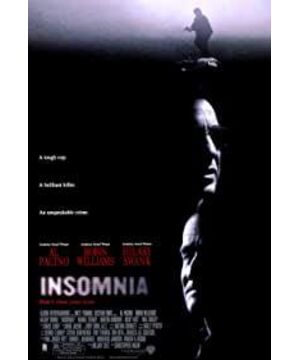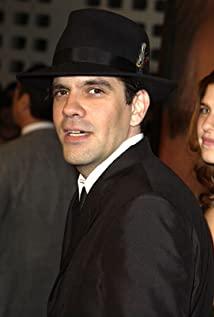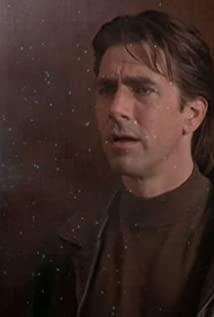I remember before, a psychological thriller film by Nolan, "Shards of Memory", almost caused a lot of fans to suffer from schizophrenia, because to deconstruct and clarify the content of this as the name film would really burn a lot of brain cells in the audience. The advent of the "Batman" series (The Mystery of the Shadow, The Dark Knight) and the "Fatal Magic" have also confirmed his successful transformation in the interpretation of the dark, gloomy, paradoxical and other film styles. The secretive and time-spaced plot atmosphere, the fine and cruel narrative structure that breaks movie viewing conventions, the trembling psychological substitution that penetrates into the bones of the audience, and the sharp and unique role image positioning in the play are the distinctive film labels of this new British director. He can always make the people in the audience excited like a shot of a cardiotonic when watching his films. Fans must mobilize every cell in their bodies to participate in Nolan’s images, to "listen" to his continuous and creative creativity. Fresh and exciting movie language.
Two years later, after "Shards of Memory", Nolan filmed "Chasing the Murder in the White Night". The film is literally translated as: insomnia. What's interesting is that before watching this film and related introduction, the picture of "Machinist" appeared in my mind. I thought this was another fantasy journey about a schizophrenic patient with insomnia. However, no. This is about a deadly duel and contest between two murderers. Insomnia is just a tiny external factor that aggravates the danger. Everything becomes muddy and misty, and people's thoughts become sluggish and sluggish due to bursts of fatigue. Nolan uses an image-conscious stream of consciousness lens to deliver hypnotic and somewhat irritable signals.
Dormer (Al Pacino), an iron-fisted police detective, and a down-and-out novelist are both conceived with each other. They contain each other for two common and flesh-and-blood secrets: they both killed people. Both knew each other well and acted, playing the cat and mouse death game. At the beginning of the story, the direction of the story is toward Dormer and his partner Harp to a remote town in Alaska to do a murder of a young girl to sort out the plot. In fact, the story gradually changes subtly: the process of handling the case is already Replaced by various acts of covering up crimes. The source of sin needs to lose justice and annihilation of human nature as a nourishment, and it will bloom with rotten and ugly flowers. At this point, the culprit of the murder, the means of committing the crime, and the psychological analysis of the perpetrator are no longer important. The loss of principle and the lost sense of justice, as well as the chaos of human nature under professional ethics and selfish desires, have surfaced in the film's theme.
In order to highlight the shadowy image of Dormer, the veteran and shrewd Los Angeles agent, director Nolan from time to time assigned some images to the characters around him, and the camera captured the detectives because Dormer was keen and quiet during the investigation. He was too overbearing to handle the case and became dumbfounded, puzzled to the point of admiration. Especially the female police officer Ellie played by Hilary Swank's adoration and conviction in the eyes of Dormer. Once the police badge that exudes a deterrent effect becomes dusty, it may diffuse a foul smell. Some problems can actually be simplified. Excessively savvy people may take risks and risk their lives for selfishness and ulterior secrets when they cannot predict the consequences of serious events. Dormer made such a simple mistake. The large panoramic view at the beginning of the film outlines the pure white beauty of the snow valley in Alaska. Everything looks illusory and unreal, and it also implies that this is a breeding ground that is easy to be deceived and cultivates the source of evil. The expanse of the white snow canyon is also a metaphor: it implies that Dormer's career seems to be upright and bright, but there are stains that are invisible to the naked eye, but it is hidden very cleverly.
Flashback shots frequently appear in Dormer’s mind and on the screen, and are also reflected in the eyes of the audience. Nolan’s lens language is at work, quietly recounting the contradiction between the protagonist Dormer’s wandering and struggling between selfishness and principles. Mood: The painful face, the eyes that have been loose for many days because of insomnia, the gradually blurred picture, all these are waiting to erupt in depression. I think the audience, like me, are looking forward to what kind of choice Dormer will make in the end, or guessing who will be out at the end, just wanting to get an emotional catharsis and the affirmation of returning to the bottom line of justice. .
The film’s second male character, the novelist Walter (Robin Williams), is by no means a criminal in the ordinary sense. He openly teases the iron-fisted detectives of the police circle with the trump card that can hold Dormer’s seven inches in his hand. And make a devil's deal with him. Because in his eyes, Dormer is the same type of person as him, only the methods of killing are different. The most outstanding plot of the film is the fight between the two. This is also the battle point of the psychological drama between the two sides after tearing off the disguise masks and projecting each other on each other: evil and good are separated by a line, just like the front sides of a coin. The director has been able to control these wits and courageous scenes, because the highlight is here. The audience must be motivated by their feelings of sympathy and disgust, so that the climax of the film will be pushed to the highest point here. The time has come for the audience to wait for the two to release their inner secrets. It seems that the murderers have their good reasons. They deserve sympathy from a reasonable point of view, but they are not merciful from a moral point of view. In the ending, Dorothy jumped into the water of the lake house and the process of handling the case at the beginning of the film is similar to the beginning and end of the film.
The film's heavy cast lineup has become the biggest bargaining chip in this script story. Romantic lover + justice police image Al Pacino plays detective Dormer, and comedian Robin Williams, who is suitable for all ages, provoked the cunning and treacherous novelist, who are all film roles. The best choice.
The film is literally translated as "insomnia". The depressed look of not having a good night's sleep for six days is just like what Pacino did in the lens: the absent and sluggish eye sockets are deep in the eyelids, and the scene at the extreme point of view turns around. Try to maintain a clear consciousness and unbearable guilt, sometimes tyrannical and sometimes contemplative complex expressions and body language. Williams, as a key figure appearing in two-thirds of the film, became the highlight that set off another wave of the plot. He is still so smiling and soft, but he is already concealed in the cotton and struggling. force. The film’s other supporting actress, Ellie, the tough American woman Hilary Swank in "Million Dollar Baby", should not have much room for performance. This is also limited by the image and storyline of the script. She can only act as a young and straightforward female police officer, maintaining the image of justice and professional ethics from the beginning to the end, highlighting Dormer’s relief from the moment when he returned to conscience and principle at the last moment.
Christopher Nolan’s new film "Foundation Laying", which will be released in the summer of 2010, is an action science fiction film wandering between dreams and reality. "Insomnia" also has similar thematic elements and is related to sleep, but the former is in a deeper sense. Extend, look forward to seeing it!
View more about Insomnia reviews











